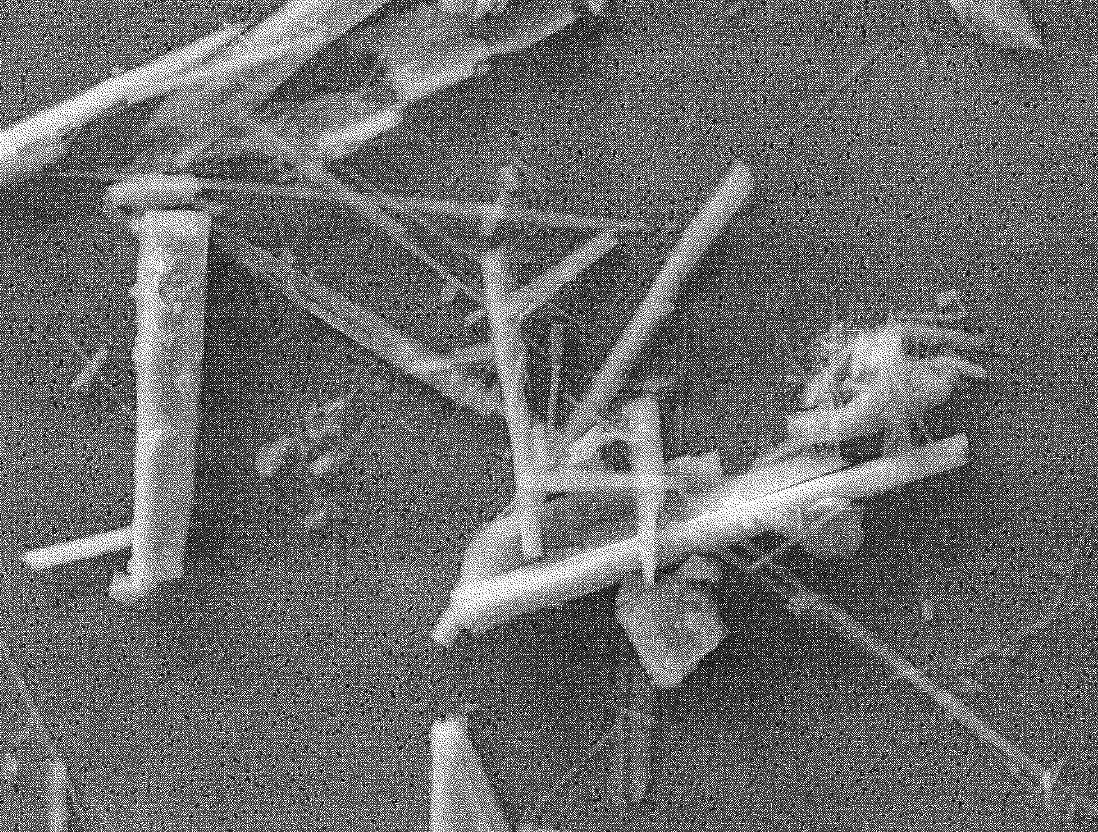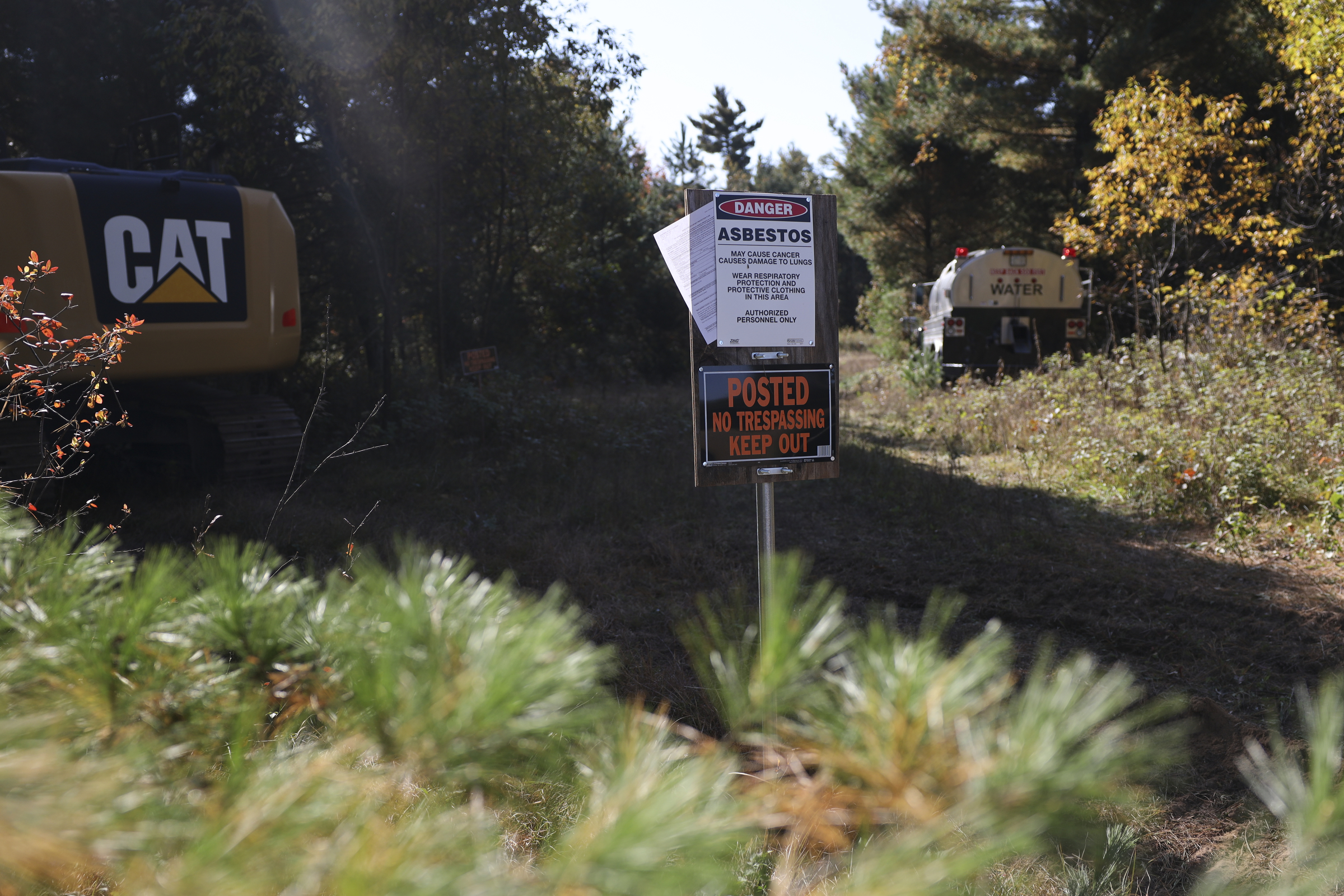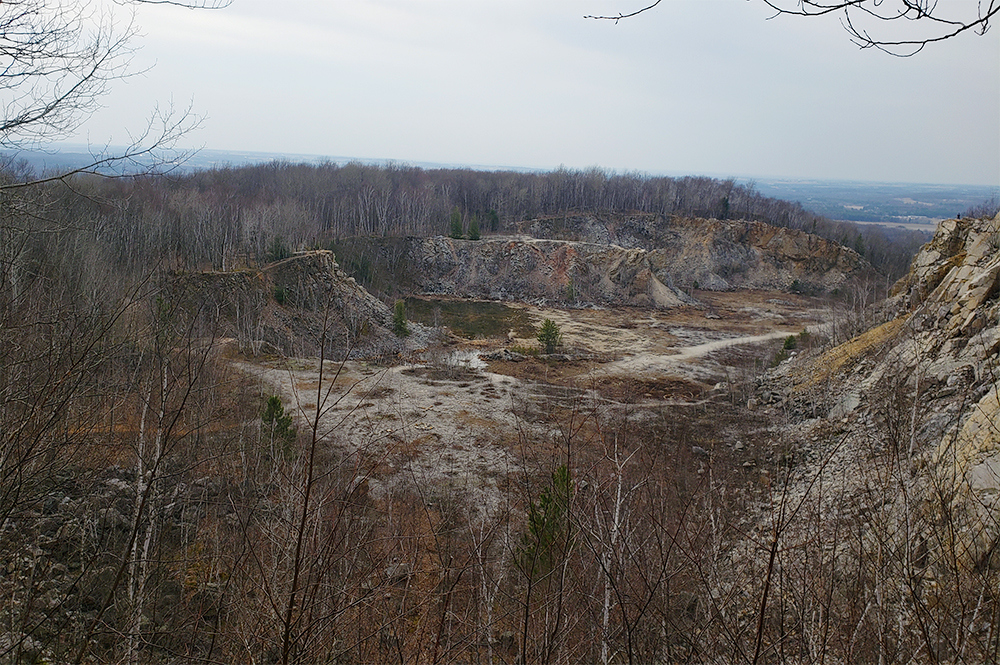A debate over whether minerals found in a proposed mining area in the Penokee Hills might pose a public health hazard has led to accusations of science denial and character attacks.
Long, slender, flexible fibers found in rocks in the mining area were first identified as asbestiform last year by the state Department of Natural Resources. In October, a geoscientist from Northland College, Tom Fitz, also found large amounts of the mineral at one site within the mine area.
Examinations by scientists at the University of Wisconsin-Madison and St. Lawrence University confirmed that the fiber is asbestiform. Such fibers are linked to mesothelioma, an aggressive lung cancer that has no cure. The discovery meant that breaking up rocks in at least one area of the open pit iron ore mine would be a potential public health threat.
Stay informed on the latest news
Sign up for WPR’s email newsletter.
Gogebic Taconite, the company behind the proposed mine, insisted that the researchers were jumping to conclusions. But in December, the DNR’s mining spokeswoman Ann Coakley said the science was sound.
“They maintain in their plans that there are not asbestiform minerals in the area,” said Coakley. “We know that there are because we ourselves tested a sample and have the results back.”
In January, Milwaukee-based conservative group Media Trackers reported that University of Minnesota-Duluth (UMD) lab scientist Bryan Bandli had disputed the findings, saying it was a different mineral. Media Tracker’s Brian Sikma, however, never mentioned in his report that the other mineral type could also be asbestiform.
A Wisconsin Public Radio open records request to UMD indicated Sikma was aware of that possibility, telling Bandli in an email that it is “…likely an asbestiform but not grunerite. Is that correct?”
“We stand by the story,” said Sikma. “If Bandli comes out and has his own interesting research that now says it’s asbestiform, then certainly that’s an interesting story and should be reported upon.”
WPR sent pictures of slides to the National Institute for Occupational Safety and Health at the U.S. Centers for Disease Control, where a researcher said that not only can both minerals contain asbestos, but that the slides show slender, long, flexible fibers. Thus, the mineral type makes no difference and can be a public health threat.
Although Bandli refused to comment on his findings to other media, saying he was “gun shy,” WPR sent him the CDC’s comments and asked if he agreed. He said he does, but that more study is needed to determine public health impacts.
Media Trackers did accuse geoscientist Tom Fitz of “jumping to conclusions” with “evangelistic fervor.”
Fitz likes to think this isn’t a case of denying the science.
“I hope not. You know, because it is what it is, no matter who is looking at it,” he said. “It’s an asbestiform amphibole. It doesn’t matter who’s looking at it – it is in the rock and it’s potentially a health hazard.”
Bad River Tribal Chairman Mike Wiggins, an opponent of the mine, thinks GTAC and Media Trackers are playing what he calls a dangerous public relations game.
“The people up here, the local residents, do not want this environmental carnage to happen, and the mining company understands that,” said Wiggins. “So staying away from the real talk about the dangers and destruction and the death and sickness that comes from this kind of thing is the name of the game.”
GTAC told the DNR that their position remains “that asbestiform material is unlikely to be present in the reserve.”
GTAC spokesman Bob Seitz also said that ultimately, they’ll have to abide by the science: “And so, nobody’s going to start mining while this is in question.”
Seitz said GTAC will have to prove they can mine the minerals safely before getting a permit.
Wisconsin Public Radio, © Copyright 2024, Board of Regents of the University of Wisconsin System and Wisconsin Educational Communications Board.





